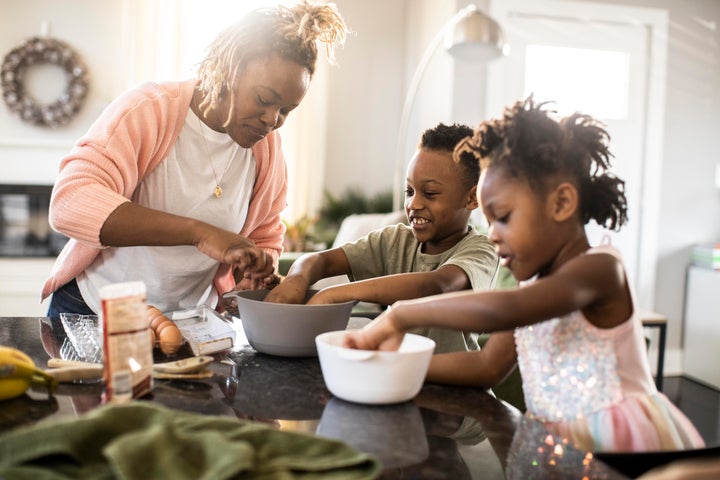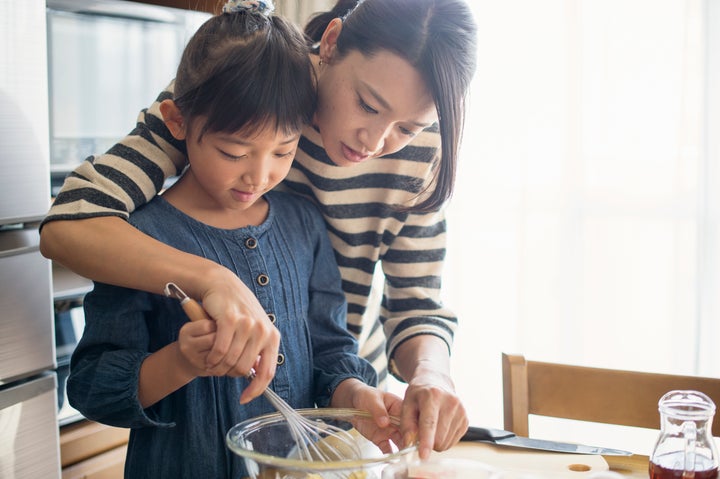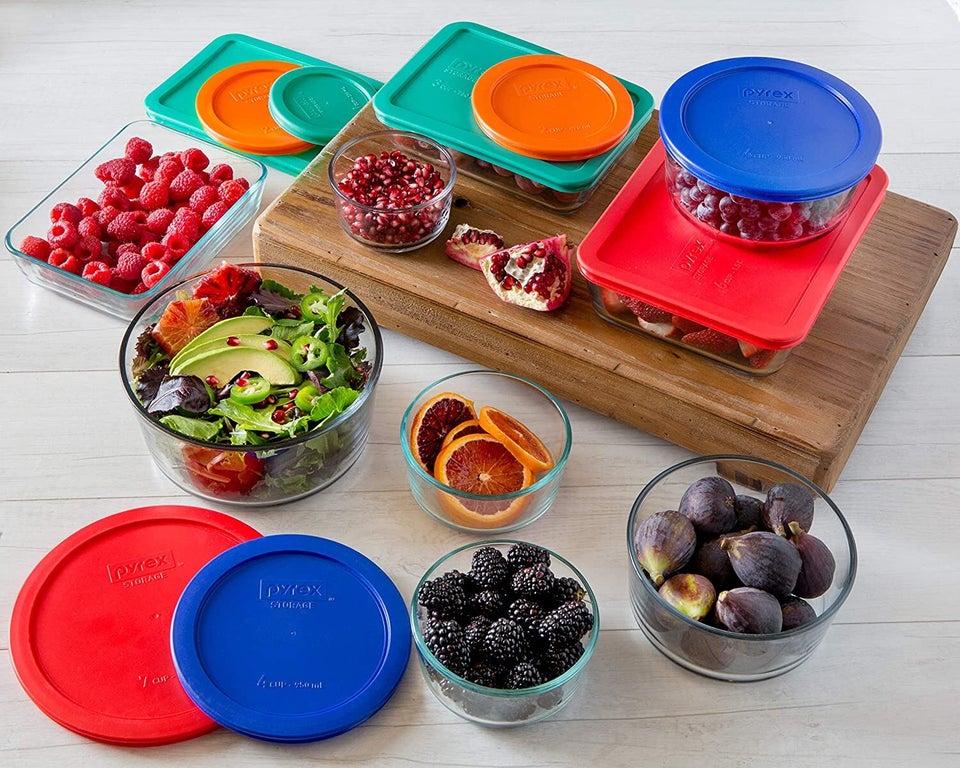
They’ve been eating your food, gratis, for years. Maybe this should be the year you actually teach your darling children to cook for you, for a change. We checked in with people who teach kids cooking classes nationwide, and they told us it’s not only possible for your kids to become decent cooks, but it’s pretty easy to manage if you follow a few basic principles. And yes, they can be expected to clean up afterward, too.
Decide on a goal
Knowing what you want to achieve before you begin will make the whole process easier. Do you want some help in the kitchen because you’re overwhelmed? Are you looking for a fun way to de-stress after a hard week? Is there an upcoming cultural holiday that’s important to your family traditions? Do you hope to offer up a “win” to build their self-confidence?
Chef Pascal Simon is the founder of Bake Austin, a kids culinary school that offers virtual cooking classes. She urged parents to keep the bigger picture in mind, too.
“The most obvious reason to do this is that kids will learn valuable life skills and independence,” she said. “Cooking can empower them, help them experience a sense of freedom and increase their self-confidence. And all of those moments will become woven into the fabric of their childhood. It’s a wonderful, low-pressure way of bonding with your kids, slowing down a bit, have some lighthearted conversations and just simply spending time together.”
“Teaching kids to cook is a way to help them take ownership of their life and develop to their full potential,” chef Marshall O’Brien told HuffPost. “Cooking for themselves is not just eating, it’s nourishing, too.”
O’Brien likes to connect the dots between nourishment and health. “I always tell kids that cooking nutritiously for themselves is a way to have more energy through the day, have clearer skin, perform better at school, even focus more on video games, if that’s their thing,” O’Brien said.
“I tell them ‘give up your power’ and just let it be a win for them, not you. The first mistake parents make is saying, ‘We’re going to cook this meal I decided on, and you’re going to love it.’”
- John Sugimura
“My primary objective always is to engage the kids,” said John Sugimura, corporate executive chef for Taher, a food service management group. During his nationwide travels, he’s conducted cooking classes and demonstrations at more than 100 schools, reaching more than 65,000 students. For Sugimura, it’s not really about the food. “Food is just the tool, the common denominator that brings people together,” he said.
How to make it happen
“I’ve talked to hundreds of parents about this, and literally 90% of them tell me that when they fumbled, it was because kids weren’t involved in the planning stages,” Sugimura said.
“I tell them ‘give up your power’ and just let it be a win for them, not you. The first mistake parents make is saying, ‘We’re going to cook this meal I decided on, and you’re going to love it,’” he said. “Instead, try this: ‘Let’s cook something fabulous that you love, so tell me what will make that fun for you.’”
“Everything is about mindset for me,” said chef Anna Klimmek, founder of Happy Food MN. “Go into the experience planning to have fun, and feel free to make mistakes. Because I’m a chef, I’m usually super-controlling of my kitchen, but when kids are involved, you have to throw your rules out.”
“People don’t like being told what to do, no matter what age they are,” O’Brien said. “But we do like it when people ask, ‘Can you help me with this?’ Enroll them in the process so they feel like the leader. Give yourself some grace, and if it doesn’t work out, try it again.”

Take time for prep
Anna Farrier is executive director of Cooking With Kids, a Santa Fe, New Mexico-based nonprofit started in 1995 that teaches 5,000 students each year. She says every successful cooking session begins with a focus on preparation. “Read the recipe together and gather all the ingredients,” she told HuffPost. She asked parents to remember that cooking is learning, too: “The beauty of food and cooking is that it can teach all sorts of academic concepts, including reading for meaning, math and fractions.”
While you may feel like you know every square inch of your kitchen only too well, your kids might not have a clue about its setup. “Show your kids where the pots, knives and bowls live,” Simon said. “Be sure you have a first-aid kit, a fire extinguisher and good, dry potholders, and that they know where those are.”
Safety is important, and it requires focus. “No phones or TV in the kitchen when they’re working with you,” she said.
What’s age appropriate?
Shelagh Mullen runs summer Kids Camps that teach cooking to kids of all ages. When parents ask her about age-appropriate activities, she’s a firm believer in “the earlier the better” as a guiding principle.
“Even a child as young as 2 can help measure, pour, scoop, knead dough and mix,” she told HuffPost. “You can give a toddler a plastic knife and a banana and let them slice. I think around age 5 is a good time to give them a paring knife and a zucchini or mushroom to practice slicing and chopping. The stove and oven are a bit later, more like ages 9 or 10. And never ever let them fry anything, which is a job that really should be left to adults.”
Yes, they need to clean up
Here’s one thing the chefs told us loud and clear: If your kids can cook, they can clean. “I think we need to change the script around cleaning up,” Simon said. “In my classes, I make it a non-negotiable — if you cook with me, you’re also responsible for cleaning up. But most importantly, we can celebrate a clean kitchen and take pride in a clean space.”
One of Simon’s biggest tips is to clean as you go. “Why wait to clean up later, when we can just wash the dishes quickly and put ingredients away as we use them? It doesn’t take much longer to carry the flour container back to the pantry than to set it on the counter. It takes only a minute to wash a bowl out, or rinse a plate and put it in the dishwasher.” And don’t forget how much kids love water play.
“Dishwashing is a great job to give a little one,” Farrier said. “Sinking their hands into a tub of warm water can really calm them down, and soon they’ll be clamoring to be the designated dishwasher.”
As with cooking, asking your kids to clean requires letting go, if only for a little bit. “They may not clean to our standards, but if they put the ingredients away and even halfway wash the dishes, be grateful and praise them,” Simon said. “They don’t have to do it perfectly, but they can learn new habits and learn that cleaning up is something to be proud of and that actually brings satisfaction. Trust that they can clean up, because I know they can.”
Recommended first projects
Farrier suggested applesauce as a surefire first recipe. “We start on that with our pre-K and kindergarten groups,” she said. “It smells so good, and it’s a little miracle when it all unfolds.” (Here’s the Cooking With Kids recipe.)
Mullen suggested that a super-easy first project is a peanut butter and banana sandwich. “Even little ones can slice the banana with a plastic knife,” she said. “Let them add extra goodies, like jam, chocolate chips or marshmallow fluff. Ask them to give the recipe a fun name, pour out some milk, and have everyone eat together.”
O’Brien, whose two daughters are ages 7 and 10, suggested that a great first recipe is pancakes, which his girls have loved to cook with him for years. “They can practice portioning ingredients, cracking eggs, mixing wet and dry ingredients, and as they get older, learning how to get comfortable putting a pan on the stove,” he said. “Talk with them about how the food looks and smells as it cooks, and how it changes. Teach them to watch for the moment that bubbles appear on the edges, and you can work up to them feeling comfortable in flipping them.”
Simon noted that while baking is also often a favorite first culinary project, “cooking a meal is special and more forgiving than baking.” With this in mind, she suggested starting with homemade pizza: “It’s creative and infinitely customizable. You can go to the store together and select toppings. Kids can write a menu, prepare everything in advance and each member of the family can create their own choice.”
Older cooks: The ‘signature dish’
“If you have older cooks, it’s fun to teach them a couple ‘signature dishes’ that can be their specialty,” Klimmek said. “Make them together three or four times, and then announce, ‘You’re on your own and I won’t interfere.’ My daughter is 16 now, and one of her signatures is Burger Night. She makes a really good burger, and she has so much pride about it.”
As your budding chef gains in skill and interest, you can begin to make family and cultural connections, too. “Pass on your family recipes or create a family cookbook,” Simon suggested.
Then stand back and watch them flourish. “I have countless parents tell me their kids have decided to cook dinner more often, sometimes even as often as once per week,” Simon said. “We just have to give them the trust and freedom, because they’re hungry to learn.”
